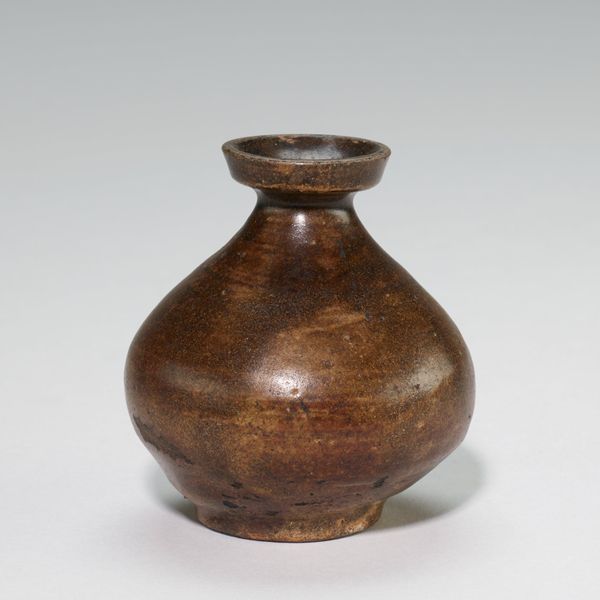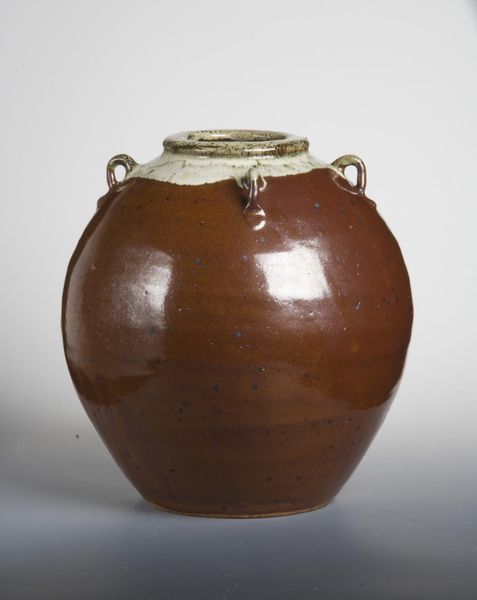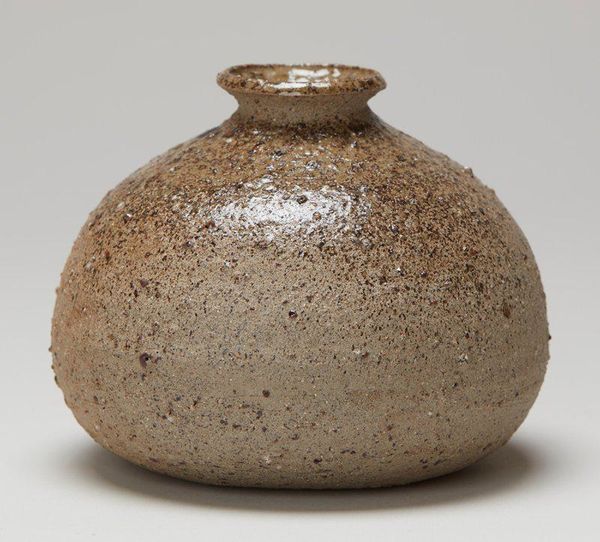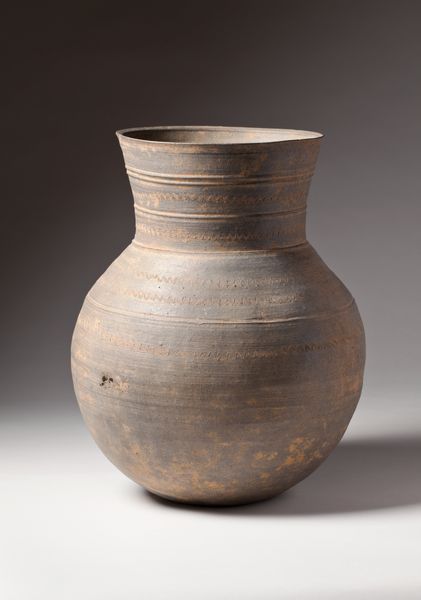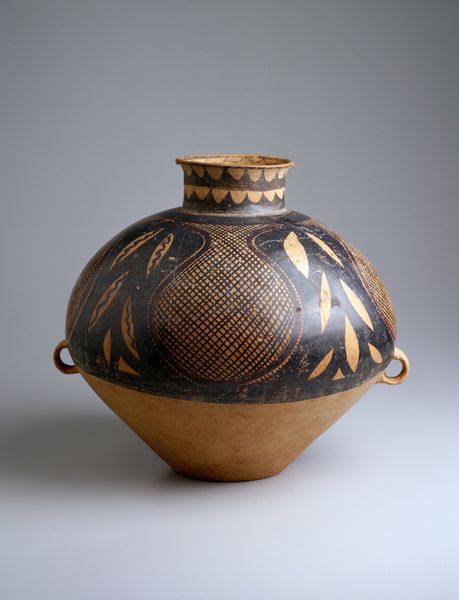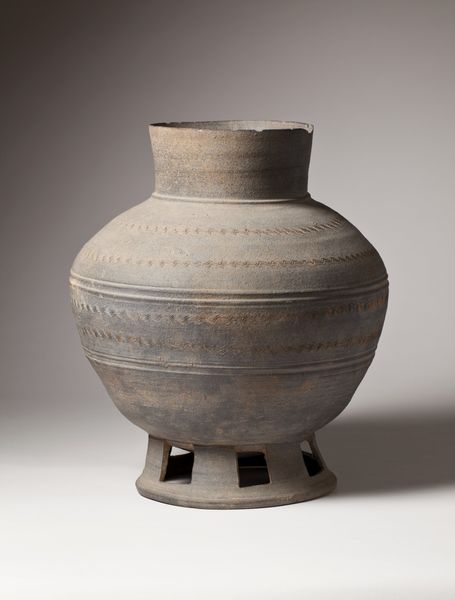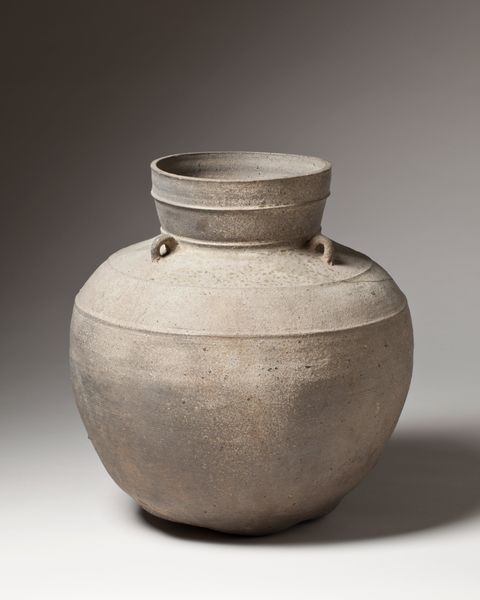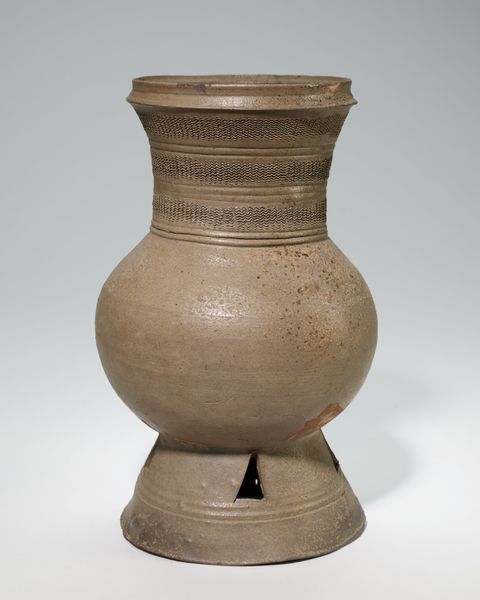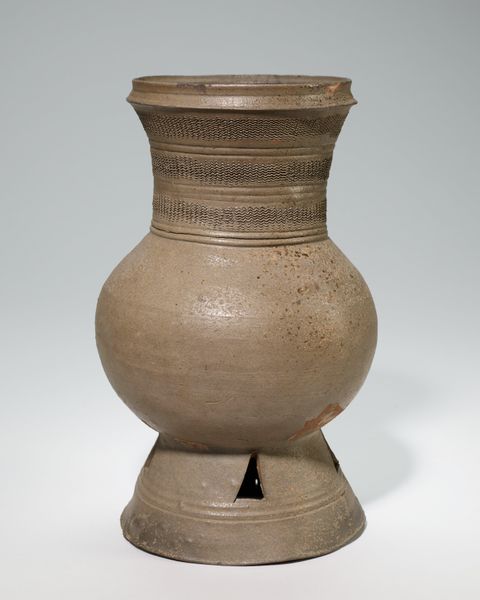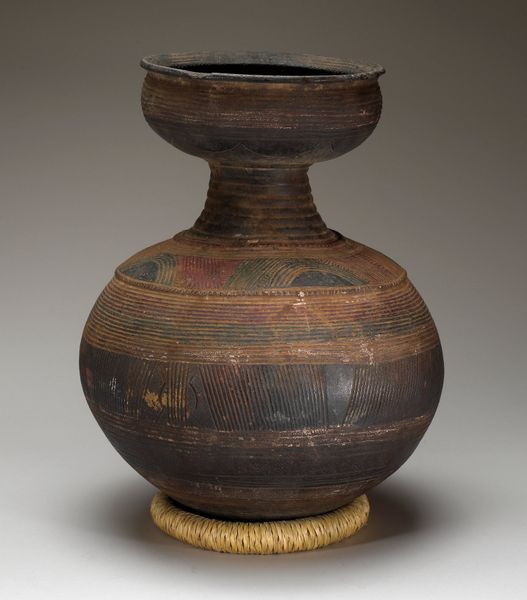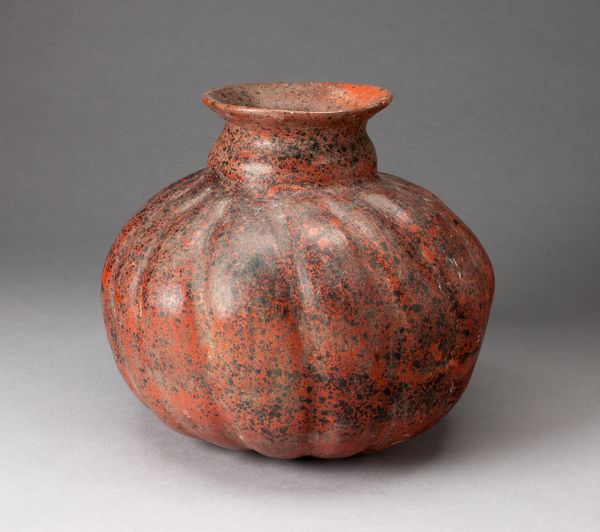
ceramic
#
ceramic
#
stoneware
#
ceramic
Dimensions: 12 3/8 × 10 1/16 × 10 1/8 in. (31.43 × 25.56 × 25.72 cm)
Copyright: Public Domain
Editor: This stoneware bottle, dating back to the late 19th or early 20th century, immediately strikes me with its earthy tones and smooth, tactile appearance. The shape is wonderfully organic. What are your initial impressions of this anonymous piece? Curator: From a formal perspective, the beauty of this piece lies in its stark simplicity. The globular form, articulated by subtle horizontal bands, contrasts elegantly with the slender neck and flared mouth. Notice how the anonymous artisan uses a limited palette – the variations within the brown glaze are paramount. What structural elements contribute to your understanding of this work? Editor: The shape and form, like the lines on the bottle, are clearly the key feature. I noticed also that the way the glossy glaze gathers in some areas gives it more dimension. How would the glaze pattern influence a Formalist's approach to this object? Curator: Indeed. The glaze serves not only as a surface treatment, but as an active element in defining the bottle's contours. Note how the pooling and variations in thickness accentuate the curvature and draw the eye upwards towards the flared mouth. It creates a certain tension – a visual push and pull that activates the entire form. And notice that each ceramic creation is unique due to the firing process and that’s why the details become critical to understanding its material identity. Editor: So, by examining the glaze, shape, and form so closely, we understand the visual tension of this functional, everyday object without needing to know anything about who made it or what its specific cultural use was. Thank you for the analysis! Curator: Precisely! By understanding its intrinsic structure, one gains a deeper appreciation for its aesthetic qualities.
Comments
No comments
Be the first to comment and join the conversation on the ultimate creative platform.
